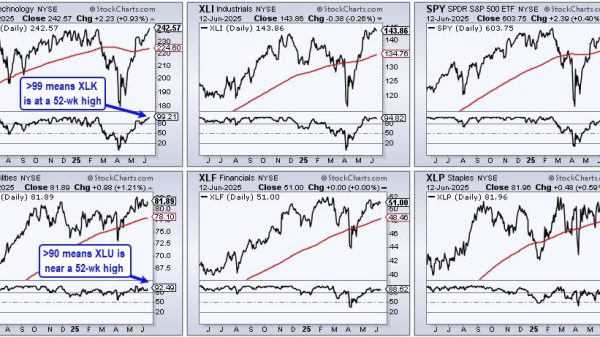What Is AER (Annual Equivalent Rate)?
Let’s start from the beginning.
There are many questions about AER. For example, “What is AER?”
AER stands for annual equivalent rate. It is a standardized method used to calculate and compare the interest or investment returns on financial products such as savings accounts, loans, or investments.
It is designed to provide a consistent and fair representation of the actual return on an investment over a one-year period.
What’s important, it takes into account the compounding effect of interest or investment returns, assuming that any interest or returns earned are reinvested or added to the account balance.
It allows individuals to easily compare different financial products by providing a clear measure of the effective annual return they can expect to receive.
The AER is calculated by considering the stated interest or investment rate and the compounding frequency (e.g., annually, semi-annually, quarterly, monthly).
It provides a more accurate representation of the overall return than simply looking at the nominal interest rate.
Pros and cons of annual equivalent rate
Hopefully, it is quite easy to remember “What is AER.”
What about its pros and cons?
The annual equivalent rate has its advantages and disadvantages.
Here are some advantages:
Standardized comparison: One of the key advantages of AER is that it provides a standardized measure for comparing different financial products.
It allows consumers to easily compare the effective annual returns on savings accounts, loans, or investments, even if they have different compounding frequencies or interest rates. This transparency helps individuals make informed decisions about where to invest their money.
Reflects compounding effects: The AER takes into account the compounding effect of interest or investment returns.
By considering the reinvestment of interest or returns, it provides a more accurate representation of the overall return on an investment over a one-year period.
This allows individuals to understand the potential growth of their savings or investments and make better financial decisions.
Fair representation: AER provides a fair and consistent representation of the annual return on financial products.
Easy to understand: AER is a straightforward concept.
What’s important, it provides a single percentage figure that represents the annual return on an investment, which makes it simpler to compare different products and assess their relative benefits.
This transparency empowers individuals to make informed financial decisions without the need for complex calculations.
Disadvantages of Annual Equivalent Rate
As stated above, the annual equivalent rate also has its disadvantages.
Apart from “What is AER”, it is important to understand the cons of AER as well.
Investors shouldn’t forget about the cons of AER. Let’s take a look at some of them:
Limited scope: While AER is useful for comparing the returns on savings accounts, loans, or investments, it doesn’t capture other factors that may affect the overall value or attractiveness of a financial product.
For example, it doesn’t consider factors such as liquidity, risk, or other features of the product that may be important to individuals. Therefore, relying solely on AER may not provide a comprehensive evaluation of the suitability of a financial product.
Ignores timing of cash flows: AER focuses on the annual return but does not account for the timing of cash flows. It assumes that interest or returns are reinvested immediately and continuously throughout the year.
Nonetheless, in practice, individuals may receive interest or returns at different times or in irregular intervals. This timing mismatch between the AER calculation and actual cash flows can impact the overall return and may not be reflected accurately.
Why AER may not work for everyone
We can’t forget about other issues as well.
While AER aims to provide a standardized measure for comparison, it is important to consider that some financial products may offer additional benefits or features that are not captured solely by the AER.
For example, a savings account with a slightly lower AER may offer more flexible withdrawal options or better customer service.
Therefore, individuals shouldn’t rely solely on AER when making financial decisions but should also consider other factors relevant to their specific needs and preferences.
Role of education in finance
Education plays a vital role in finance, providing individuals with the knowledge and skills necessary to make informed decisions, manage their finances effectively.
Here are some key reasons why education in finance is important:
Financial literacy: Education equips individuals with the fundamental concepts and principles of finance, allowing them to understand financial terms, interpret financial statements, and make sound financial choices. It empowers individuals to take control of their financial well-being, budget effectively, and plan for the future.
Investment decisions: Education in finance helps individuals make informed investment decisions. It enables them to understand investment vehicles, assess risk and return, diversify portfolios, and align investments with their financial goals. This knowledge helps individuals grow their wealth and make wise investment choices.
Debt management: It educates individuals about the potential risks and consequences of debt. Importantly, it teaches strategies for managing and reducing debt, including budgeting, debt consolidation, and interest rate management. With proper education, individuals can avoid excessive debt and develop strategies to become financially secure.
The title of the article is “What is AER? So, let’s get back to AER.
The annual equivalent rate offers significant advantages by providing a standardized measure for comparing the effective annual returns on financial products. It reflects the compounding effect of interest or returns and allows individuals to make informed decisions.
However, it is essential to be aware of the limitations and potential drawbacks of AER, such as the limited scope of evaluation, etc. Therefore, individuals should consider AER alongside other relevant factors to make well-rounded financial decisions.
The post What is AER (Annual Equivalent Rate)? appeared first on FinanceBrokerage.

























